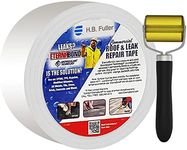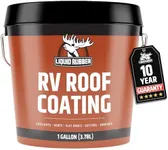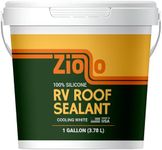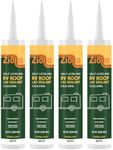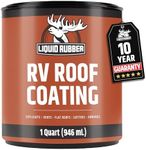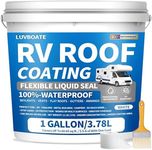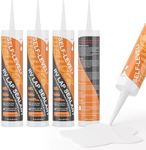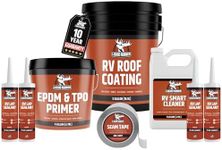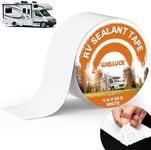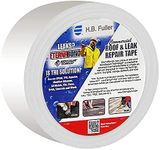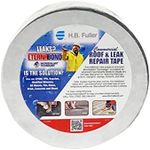Buying Guide for the Best Roof Sealant For Rvs
Choosing the right roof sealant for your RV is important to protect your vehicle from leaks, water damage, and the elements. The right sealant will help maintain the integrity of your RV roof, prevent costly repairs, and extend the life of your RV. When shopping for a roof sealant, it's important to understand the different types and features available so you can select the best fit for your specific needs and the type of roof your RV has.Sealant TypeSealant type refers to the chemical composition and form of the product, such as silicone, acrylic, polyurethane, or butyl. This is important because different types adhere better to certain roof materials and offer varying levels of flexibility, durability, and weather resistance. Silicone sealants are highly flexible and waterproof, making them great for areas with temperature changes, while acrylic sealants are easy to apply and work well for UV protection. Polyurethane and butyl sealants are known for strong adhesion and long-lasting seals. To pick the right one, check your RV roof material (rubber, fiberglass, metal, etc.) and match it with a compatible sealant type for the best results.
Application MethodApplication method describes how the sealant is applied, such as in a tube for caulking guns, as a liquid for brushing or rolling, or as a tape. This matters because some methods are easier for spot repairs, while others are better for covering large areas. Tubes are great for sealing seams and small cracks, while liquid or brush-on sealants are ideal for coating the entire roof. Tape is quick and convenient for emergency fixes. Consider the size and type of repair you need to make—choose a method that matches your comfort level and the area you need to seal.
Cure TimeCure time is the amount of time the sealant takes to fully set and become waterproof. This is important because you need to know how long your RV must stay dry and unused after application. Some sealants cure in a few hours, while others may take a day or more. If you need a quick fix before a trip, a fast-curing sealant is best. For long-term repairs, a longer cure time may be acceptable if it offers better durability. Think about your schedule and how soon you need to use your RV after sealing.
Flexibility and UV ResistanceFlexibility refers to the sealant's ability to expand and contract with temperature changes and movement, while UV resistance is its ability to withstand sun exposure without breaking down. These are important because RV roofs are exposed to the elements and can shift as you drive. A flexible, UV-resistant sealant will last longer and prevent cracks or peeling. If you travel in areas with extreme temperatures or lots of sun, prioritize these features to ensure your seal stays intact.
Compatibility with Roof MaterialCompatibility means how well the sealant works with the specific material of your RV roof, such as EPDM rubber, TPO, fiberglass, or metal. This is crucial because using the wrong sealant can lead to poor adhesion, leaks, or even damage to your roof. Always check the product label or description to ensure it is safe and effective for your roof type. If you’re unsure, consult your RV manual or manufacturer to identify your roof material before choosing a sealant.
Weather ResistanceWeather resistance refers to how well the sealant can withstand rain, snow, wind, and temperature changes. This is important because your RV will be exposed to various weather conditions, and a good sealant should maintain its protective qualities over time. Some sealants are specially formulated to resist mildew, mold, and extreme weather. If you camp in harsh climates or leave your RV outdoors year-round, look for a sealant with strong weather resistance to ensure long-lasting protection.
